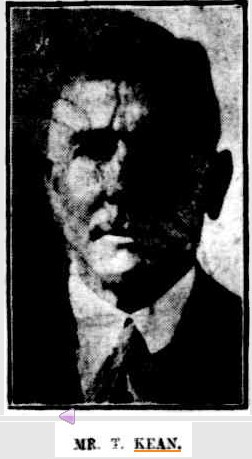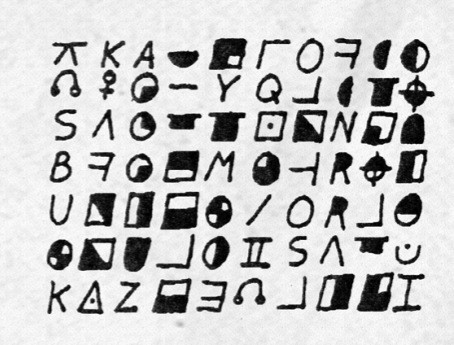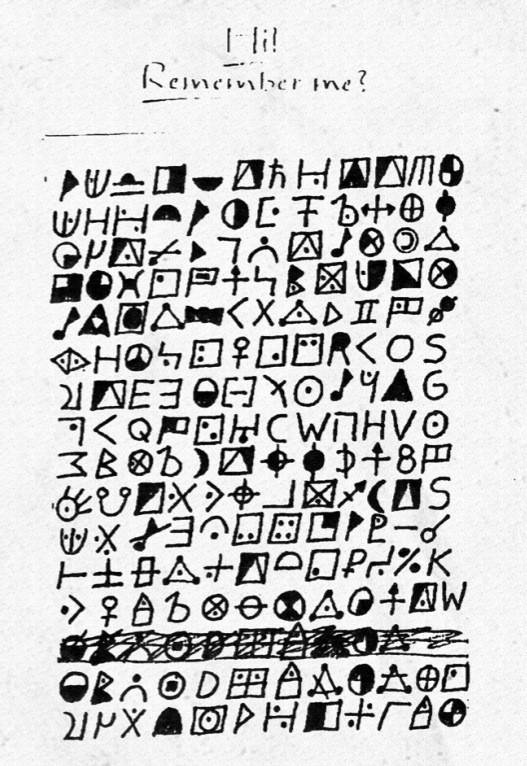A couple of months back, Byron Deveson left an intriguing comment on a (now somewhat over-run by spy talk and unkempt-looking) Somerton Man post here. He wrote:-
I think some of SM’s clothing came from Tom Kean, MD of Kean Oil after Kean’s death. This would explain the masonic (?) tie.
Recorder (Port Pirie) 20th January 1947 Page 1
Death Of Mr. Tom Kean
ADELAIDE, Sunday.
Mr. Tom Kean (managing director of Kean Oil Proprietary Limited) died at his home in Brigalow avenue, Kensington Gardens, on Friday night. He was a staunch worker for Legacy Club, a prominent Freemason, and a former State president of Commercial Travellers’ Association.
There was a second obit in the ‘Tizer (OK, the Adelaide Advertiser, if you insist):-
Mr. Tom Kean. who died at his home in Brigalow avenue, Kensington Gardens, was managing director of Kean Oils Pty., Ltd. and a foundation member of the Legacy Club. Born at Dean, Victoria. Mr. Kean joined the Vacuum Oil Co. when 21 and served in Victoria, the Riverina. Tasmania and New Zealand before being transferred to South Australia. He was SA president of the Commercial Travellers’ Association, when he joined the first AIF and served for three years. After the war he had two more terms as president and for one term served as the united president. Later Mr. Kean formed the SA firm of Kean Oils Pty., Ltd., and was managing director when he died. As a foundation member of the Legacy Club he was an enthusiastic supporter in their appeals. A son, Tom, and a daughter, Elon survive.
And even more from the Adelaide Mail:-
Reject Who Served In First A.I.F.
A foundation member of the Legacy Club, and for 43 years a member of the Commercial Travellers’ Association, Mr. Tom Kean, died last night at his home in Brigalow avenue, Kensington Gardens, after a long illness.
Mr. Kean, who was 72, served overseas with the First A.I.F. after having been rejected four times. Although never passed for service, he was sworn in by mistake, and served in France for three years as a motor driver in an ammunition column. Mr. Kean was South Australian president of the C.T.A. when he went overseas. After his return he had two other terms as president. He was united president for one term, and was the first returned soldier to hold that office. Born at Dean, Victoria, Mr. Kean was 21 when he joined the staff of the Vacuum. Oil Co. He worked in Victoria, the Riverina, Tasmania, and New Zealand before being transferred to South Australia. After a year in the motor business, Mr. Kean formed Kean Oil Pty., Ltd., of which he was managing director at his death. He was a noted worker for the Legacy Club and charity carnivals, and was a prominent Free mason. He was buried at the Centennial Park Cemetery this afternoon. Mrs. Kean, a son, Tom, and a daughter, Elon, survive him.
Oh, and it’s in the Melbourne Argus too, so it has to be true, eh?
Byron continued in a further comment:-
If SM’s clothing marked “Kean” and “Keane” came from the deceased Tom Kean of Kean Oil, then SM must have visited, or lived in Adelaide prior to 30th November 1948. I expect Kean’s clothing would have been disposed of soon after his death in January 1947 so SM was probably in Adelaide soon after this.
Commenter Misca then quickly noted:-
BD – I’m not sure if it’s relevant but Tom’s daughter Elon killed herself in December of 1947 by jumping off of the seventh floor of the Savings Bank Building. (She is buried with her father in Centennial Park Cemetery.) Cleland reviewed her death and did not open inquiry into her death. Sutherland investigated.
There’s more description here, and a picture of the building here. Incidentally, Elon Vivienne Kean had only just got engaged to Ernest Griffin, as announced in the ‘Tizer of 6th December 1947:
KEAN — RICHARDS. — The engagement is announced of Elon, only daughter of Mrs. R. Kean and the late Tom Kean, of Kensington Gardens, to Ernest only son of Mrs. C. Griffin, of Colonel Light Gardens.
But all that aside, who was Tom Kean? It turns out he was not only the president of the Commercial Travellers’ and Warehousemen’s Association, he was also the King of Commercial Travellers (i.e. the Charity king in the CTA carnival float, is my best guess). He married in 1923.
There’s a fairly gushing description of him in the Adelaide Register of 13th September 1927 (with a picture):
Mr Tom Kean, the new President of the South Australian Commercial Travellers and Warehousemen’s Association, was born in Dean (V.), a farming district between Ballarat and Daylesford. Mr. Kean, who is 52 years of age, on leaving school went on the land, but subsequently gave it up to enter the services of the Vacuum Oil Company. He represented the organization in New Zealand, Tasmania, Riverina, and South Australia. He came to this State in 1903, and evinced so much interest in the Commercial Travellers’ Association, which he joined the following year, that he was eventually elected President in 1915. Then he enlisted and went to the front, serving with the 2nd Australian Siege Battery. He was three years at the war, and on returning to Australia again resumed work with the Vacuum Oil Company. After a time he joined Adelaide Motors Limited, but in 1924 entered into business on his own account. Last year Harrisons Ramsay, Proprietary, Limited, purchased his business, and Mr. Kean took charge of their petrol, kerosine, oil, and belting department, a position he still holds. Mr. Kean is exceedingly popular in commercial circles, and especially among the men on the road, and his election is a tribute to his ability and geniality.
So… I suppose the question here is simply: what do I make of all this?
From a Somerton Man research perspective, the dead man’s clothes-as-worn and the clothes in the suitcase come across to me as fairly… random. Expensive things juxtaposed with hand-me-down stuff, along with shoes and slippers that don’t seem to fit the same feet. Pete Bowes is fond of looking at the omissions in the belongings (the famously missing socks!), but for me the overall pattern of what is present is one of give-me-downs, of charity. Did the Somerton Man have a secretly prosperous life, one that his clothes cunningly concealed? Really, I’d find it hard to believe such a thing. Regardless of anything else, his clothes seem to me to tell a tale of a marginal life, a life lived on the fringes or edges.
If, as per Byron Deveson, the story behind this all was that (the real) Tom Kean specified in his Will that his clothes be given to an Adelaide charity (he surely spent long enough competing for Charity Kingship in Adelaide to know every single local charity), and that this was where the Somerton Man got the dead man’s clothes, then I wouldn’t be surprised one little jot.
So… how can we find Tom Kean’s Will? Over to you all… perhaps?



